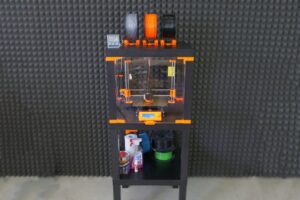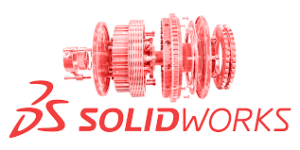Example of expert mode of you slicer configuration.
For experts I keep it short
0.1mm layer height
100% infill
2 shells
ABS filament
good cooling while printing
Some more details for the rest
Material
If you want to print ABS parts later on with this duct installed you should also use ABS as material to print the duct with. This is because the melting point of PLA is lower and the duct is installed near the hot ends of your printer. For ABS printing you should be able to close your cabin (front and side doors + top cover or at least a reversed carton box over the whole printer and filament rolls)
Because this duct has very fine walls (to achieve the required low weight) and long bridging parts you need to tune your slicer profile perfectly well for you filament.How to avoid warpingIf you have warping issues, your bed is not flat, you bed or extruder temperature is not matching your filament, your ABS filament quality is bad or you use the wrong build plate material. If you use a real flat aluminum build plate and clip (with small metal clips) a 1mm or 2mm [FR-4 fiber board][2] to it (which you are sanding once with a type 400 sand paper before) you will have the perfect build plate for ABS and PLA prints. Now you only have to find good ABS filament which doesn’t has to be expensive and optimize your slicer filament profile for it. Prints on the FR-4 fiber plate adhere pefectly while printing and detach automatically when build plate is cooling down.
Slicer
My favorite slicer is Simplify3D but I try to describe the further steps independent of the slicer in use:
Extruder temperatureYou can use a simple test cube to tune your profile. Lower the extruder temperature to the lowest temperature your filament is still continuously flowing.
Shells
Configure your profile to create 2 shells.
Filament diameter / filament feeding
The smaller a value inserted into the filament diameter field of your slicer the more filament gets extruded.
Configure your filament diameter to the highest value where your shells are still binding. Even if your filament diameter is advertised with 1.75mm typical variances of your specified diameters are somewhere between +0.09 and -0.05 mm and you mostly require 3 digits after the decimal point to specify the perfect diameter. Measuring your filament will not be enough – you will have to fine tune it with try and error.Infill to shell overlapNow you have to tune your infill to shell overlap. Common values are 10%-20% of your nozzles diameter. You can print the test cube with 100% infill and lower the overlap to the lowest configuration where the infill is still binding to the shell well.BridgingNow you need to optimize your bridging. For this step you should download a good bridging test model from thingiverse. First thing you need for bridging is active cooling. So if you don’t have a cooling duct already, you should at least print a temporary one like this and in this case reverse (turn) your extruder fans to blow at your duct. This simple duct is not as good as the one you are going to print in this thing, but it helps you to print the first one and you can print a good one afterwards with it. Except for cooling you might want to configure your printing speed while bridging to a value where you bridges are as good as possible.The design of this duct is optimized for common 0.4mm nozzles and a layer height of 0.1mm. If you have trouble printing the first few layers with 0.1mm or you run into warping problems don’t forget to read the How to avoid warping chapter in this instructions tab over here.


